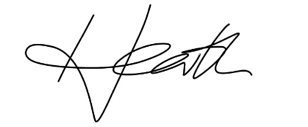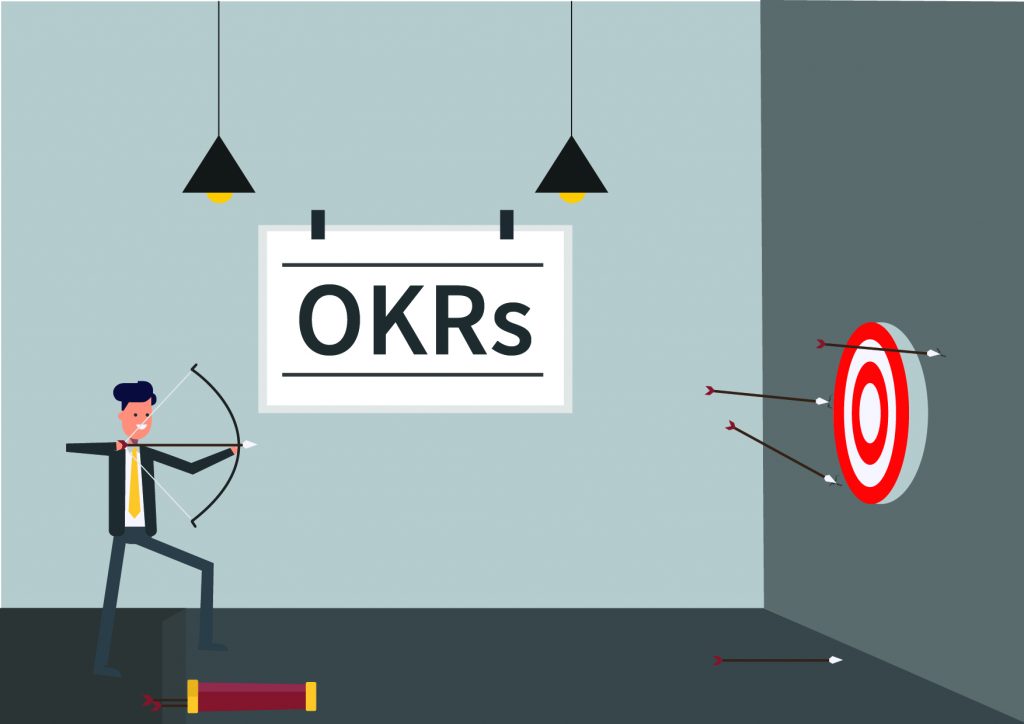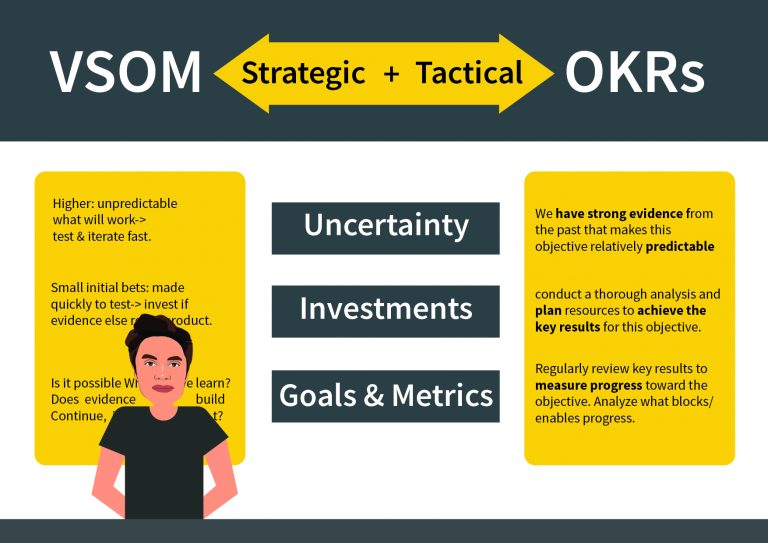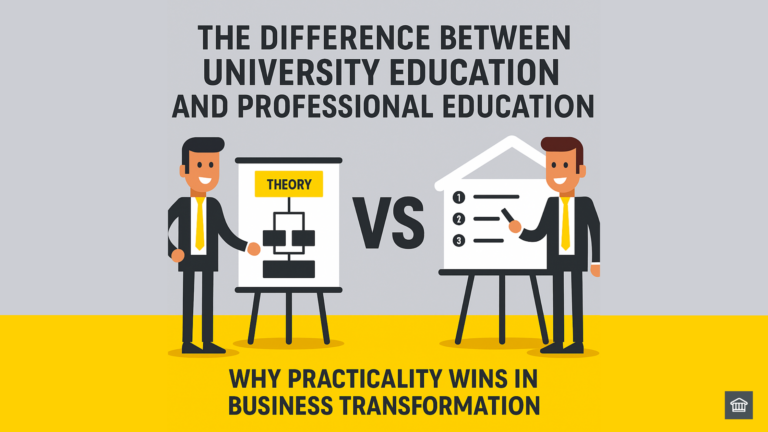In the fast-paced and dynamic business landscape, organisations are constantly seeking ways to transform themselves to stay competitive and achieve their goals. Goal setting plays a crucial role in driving success and progress. While OKRs (Objectives and Key Results) have gained popularity as a goal-setting framework, it has become evident that they have limitations when it comes to addressing the strategic aspects of business transformation. This blog post explores the shortcomings of OKRs and introduces VSOM (Vision, Strategies, Objectives, and Measures) as a superior alternative, providing a more comprehensive tool for effective business transformation.
The Limitations of OKRs:
While OKRs are effective for goal setting, they have some inherent limitations that make them less suitable for strategic business transformation:
- Missing the "Why" and "How": OKRs primarily focus on the "what" of goals, specifying the desired outcomes and measurable results. However, they often lack the depth needed to answer the fundamental questions of "why" and "how." Understanding the purpose behind a goal and determining the strategies to achieve it are critical for successful transformation initiatives.
- Lack of Vision: OKRs tend to overlook the importance of a well-defined vision that provides a clear direction for the organisation. A vision acts as a compass, guiding the transformation efforts and ensuring that goals are aligned with the broader strategic objectives. Without a compelling vision, OKRs may lack the necessary context and inspiration.
👏 "Goodbye OKRs, Hello VSOM! When you're ready to take your business transformation to the next level. #VSOMRevolution #StrategicTransformation"🚀💡
Heath Gascoigne Tweet
Introducing VSOM: A Strategic Framework for Transformation:
VSOM offers a robust and comprehensive framework that addresses the strategic questions necessary for successful business transformation:
- Vision: At the core of VSOM is a well-defined vision that articulates the organisation's long-term aspirations and desired future state. The vision serves as the driving force behind the transformation, providing clarity and purpose to all stakeholders.
- Strategies: VSOM goes beyond goal setting by incorporating strategies that outline the approaches and actions required to achieve the vision. These strategies encompass changes in people, processes, technology, and data, providing a holistic framework for transformation efforts.
- Objectives: Building upon the vision and strategies, VSOM defines clear objectives that align with the organisation's overall goals. Objectives serve as milestones and guideposts, driving progress towards the vision and ensuring alignment across the organisation.
- Measures: VSOM integrates relevant measures and metrics to track progress, assess performance, and ensure the realisation of desired outcomes. By incorporating measures into the framework, organisations can monitor the effectiveness of their transformation initiatives and make data-driven decisions.
The Power of VSOM in Business Transformation:
VSOM offers several advantages over OKRs and facilitates successful business transformation:
- Strategic Alignment: VSOM addresses the strategic questions of why, who, what, why (smaller why), where, and when. By providing comprehensive answers to these questions, VSOM ensures alignment across the organisation, creating a cohesive and coordinated approach to transformation.
- Stakeholder Engagement: VSOM actively engages senior leadership, operations teams, and supporting functions by involving them in the development of the vision, strategies, objectives, and measures. This participatory approach fosters buy-in and commitment, addressing the crucial element of stakeholder involvement in transformation efforts.
- Holistic Approach: Recognizing that transformation extends beyond goal setting, VSOM encompasses changes in people, processes, technology, and data. This holistic perspective ensures that all aspects of the organisation are considered and integrated, leading to more effective and sustainable transformation outcomes.
👏 Why settle for goals when you can have a vision? #RedefineSuccess #VSOMvsOKRs" 🚀💡
Heath Gascoigne Tweet
Conclusion
In conclusion, while OKRs are useful for goal setting, they lack the strategic depth required for successful business transformation. VSOM, on the other hand, provides a comprehensive framework that addresses the strategic questions, engages stakeholders, and aligns transformation efforts with the organisation’s vision. By embracing VSOM, businesses can unlock the true potential of strategic business transformation and drive sustainable success in today’s dynamic marketplace. It’s time to move beyond OKRs and embrace VSOM as the preferred approach for achieving meaningful and impactful transformations.

Become a Master of Business Transformation
Learn about Business-led Business Transformation using the proven 6-step agile transformation framework trusted by the UK Government, FTSE-100 and fast growing companies
About HOBA Tech
If you liked what you read, learn more about Business Transformation and how to bring it to reality with less stress, less effort, less time, less cost, and higher profit. Learn about our award-winning agile Business Transformation framework, already used by thousands across the world to transform their business, including the UK Government, FTSE-100 Companies and start-ups, check it out here.
If you want to read why others are calling The Business Transformation Playbook the “Business Transformation Bible”, read the reviews on Amazon here.
Hope you find that useful. If you did, let me know in the comments below what you like and would like to see next, and share this with anyone you think would benefit from it!
Thank you for reading this!
Sincerely,

Heath Gascoigne
P.S. If you want to join our Business Transformator community of 2,000+ like-minded Business Transformators, join the community on the Business Transformator Facebook Group here.
P.P.S. If you want to learn more about business transformation, check out The Business Transformation Playbook here.












